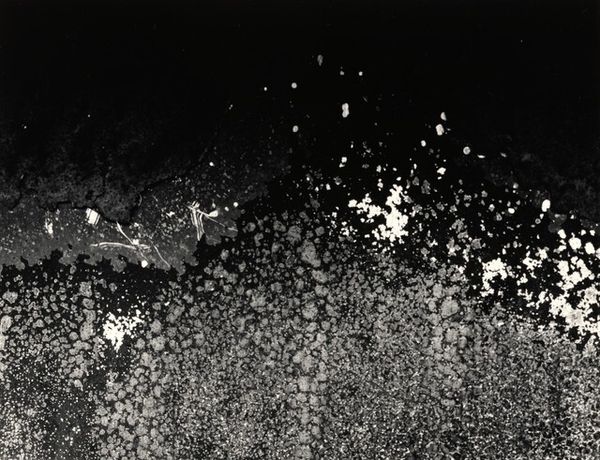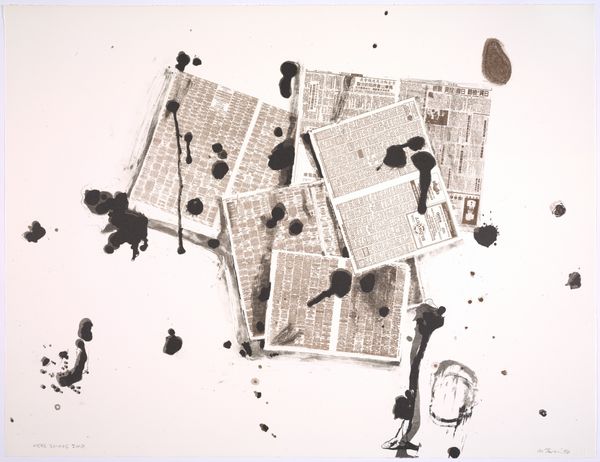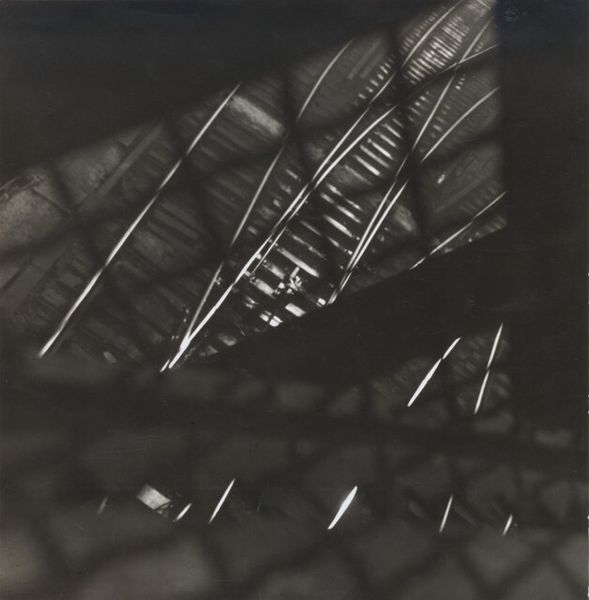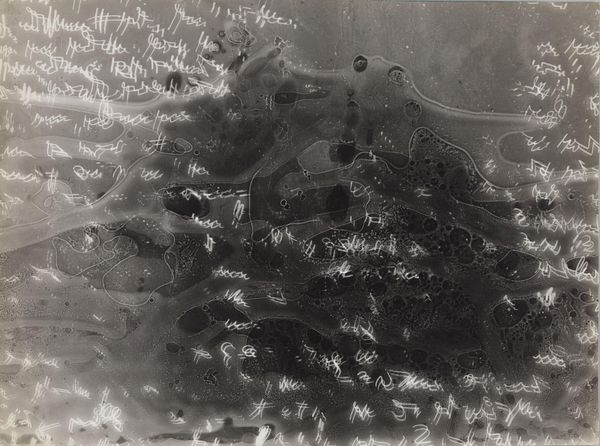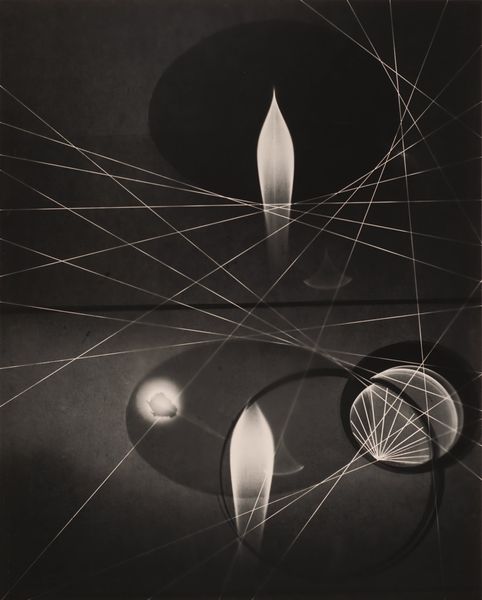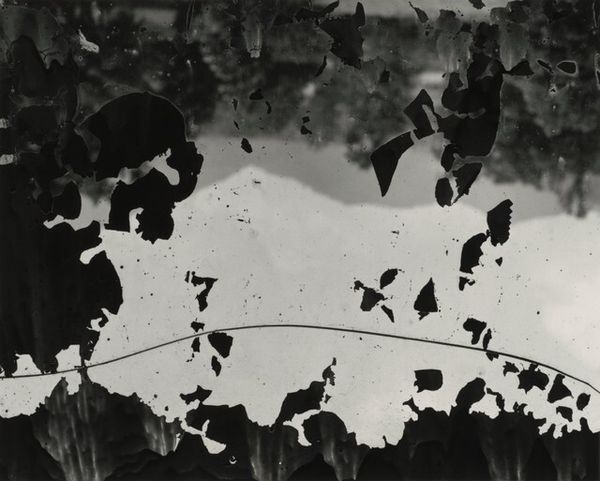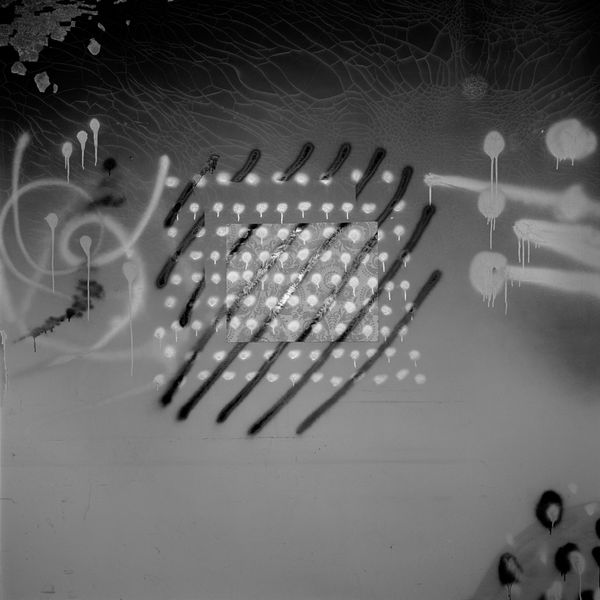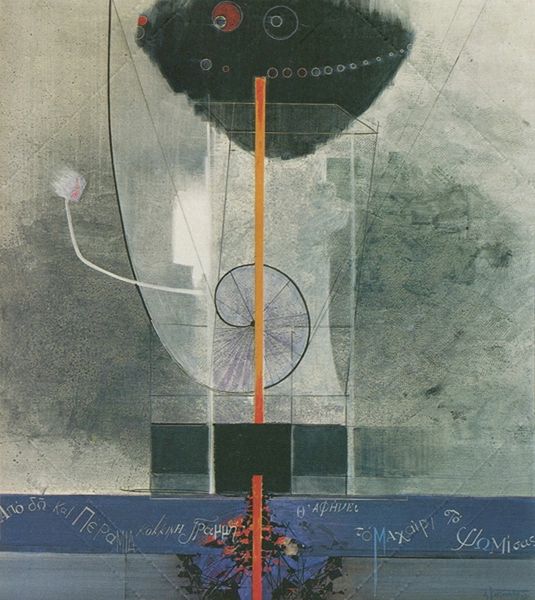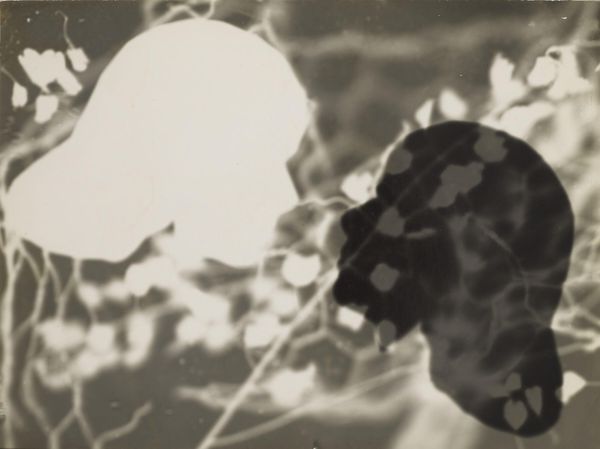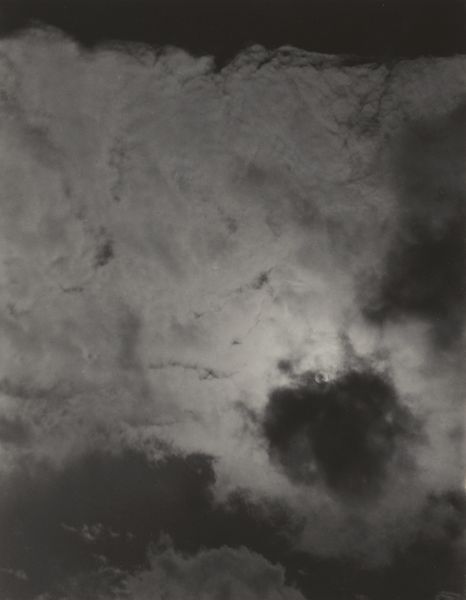
Dimensions: image: 17.8 x 17.6 cm (7 x 6 15/16 in.) sheet: 35.6 x 27.9 cm (14 x 11 in.)
Copyright: National Gallery of Art: CC0 1.0
Curator: This is John Divola’s "Vandalism," created in 1974. It’s a photograph, part of a larger series where Divola engaged in a dialogue with abandoned spaces. Editor: My first thought? Haunted geometry. It's like someone tried to trap light, or maybe a feeling, within this decaying room. You see this cube suspended against the battered wall? Gives me the shivers, in a good way. Curator: The image reflects ideas central to conceptual art of the 1970s: appropriation, site-specificity, and a blurring of the lines between artistic intervention and documentation. He went into these spaces, added something—the geometric graffiti, if you will—and then photographed it. It brings up questions about ownership, agency, and the built environment. Editor: Agency is a big word for a pretty simple action, maybe? I mean, look at those peeling walls – they’re already “vandalized” by time. Isn’t he just… adding another layer? Playing with what’s already there. A collaboration of sorts, but, one assumes, completely unwanted. There's humor there, somewhere. Curator: Perhaps it is a comment on abstract expressionism too: the bold, gestural marks rendered absurd by being carefully sprayed within geometric boundaries. How the impulse of self-expression can feel inherently transgressive when unauthorized by capital. Editor: Oh, absolutely. And thinking of this picture as dialogue now - yeah, the photograph isn’t just capturing vandalism but *becoming* a part of its ongoing story. Divola stepped into this silent scream of the walls, whispering back with lines of paint. Each daub is a breath. I like that. Curator: Considering Divola's position as an outsider entering marginalized spaces, and then intervening through what could be understood as his own sort of imposition, the work speaks to the socio-economic forces affecting communities and urban planning. These actions can be analyzed under intersectional lenses, inviting explorations into systemic inequality. Editor: Deep, deep, deep... I’m just struck by how fragile and provisional the spray paint is compared to, say, a Jackson Pollock – the bravado of that drip against…this transient puff. But hey, they both changed their contexts! It's intriguing, the contrast! Curator: Indeed. By placing his actions within the frame, literally, Divola transforms an act of supposed destruction into a creative interrogation. Editor: It’s a kind of ghostly dance, really. Vandalism caught mid-pirouette. Curator: Right—and also inviting the audience to contemplate layers upon layers of meaning behind urban decline.
Comments
No comments
Be the first to comment and join the conversation on the ultimate creative platform.
